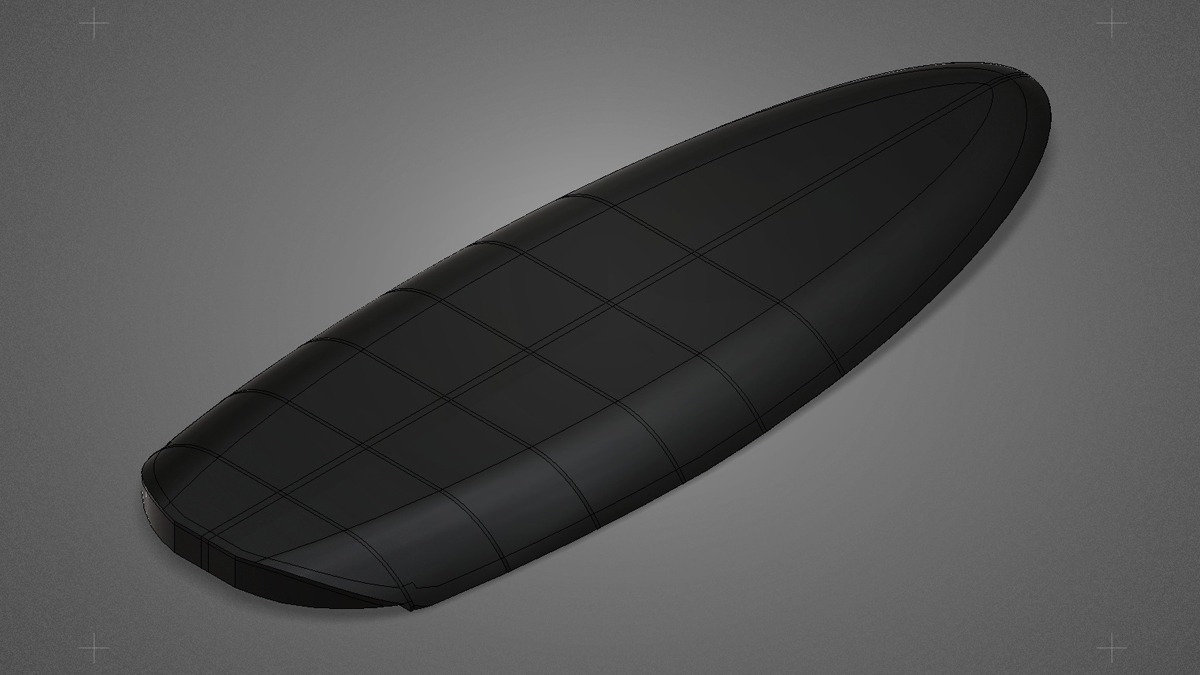VIA MASHABLE
Chicago-based MADE Boards is trying to raise $450,000 on Kickstarter to further develop its sail, kite, surf, and paddle “SmartBoards.” Using MADE’s VOLUME mobile app for iOS and Android, customers can figure out what board is best for their own body and activity, and MADE will then custom build it.
The internal structure of the boards are 3D-printed, taking into account specific factors like shape, rigidity and how much the board curves. The board is then wrapped in bamboo underlayment and a fiberglass shell to stiffen it. MADE’s founder Shanon Marks says additive manufacturing — or 3D-printing — lets the company factor in a person’s geographic location, atmospheric conditions and the way the individual rides the board. Marks told Mashable their platform uses social data, performance tracking/journaling and big data to influence design.
“You look at a surfboard, you look at a sailboard and it has terabytes of data ‘stored’ inside of it,” Marks said.
“You look at a surfboard, you look at a sailboard and it has terabytes of data ‘stored’ inside of it,” Marks said. “Like there’s this amazing, amazing history of everything it does on the water. What if we could quantify that?””Additive manufacturing really became the best way to do that because it’s a direct translation from the data input that we’re collecting.”
Here’s how MADE’s process works for consumers: Download the performance-tracking VOLUME app (for Android and iOS) before you buy their equipment. Using any existing board you might have, put your phone in a waterproof case and wear it while you’re riding it. Throughout various days, the app can collect insights on your performance that will be used as design influences for a new board. The app collects data like the time of day and year, but also cross-references with relevant atmospheric conditions: e.g., wind speed, wind direction, wave height, wave speed, wave direction, barometric pressure, altitude, and freshwater versus saltwater.
Using that collected atmospheric data, biometrics and aggregated social information from other VOLUME users, you’ll get a suggested board that’s meant to be just right for you.
Growing up windsurfing and sailing himself, Marks said MADE began out of the frustration that people pay thousands of dollars for equipment that he says isn’t made for them.
“One of the unfortunate things that I witnessed in the (windsurf) industry is that there was a huge emphasis on specialization around materials and super high performance,” he said. “The unfortunate part about it: That came at the expense of the consumer’s wallet — like boards just got more and more and more expensive.”
Marks hopes to make these sports more accessible. He also claims additive manufacturing is a win from an environmental standpoint, since 3D-printing can minimize material use.
MADE’s Kickstarter campaign still has 18 days left to go and had only reached about one percent of its fundraising goal, as of Tuesday afternoon. Backers who pledge at least $799 can get a MADE kite board; $999 for a “series one” SmartBoard; $1,299 for a paddle board; and $1,499 for a sail board.
See one of Made’s 3D-printed sailboards in action in this video:
http://mashable.com/2013/07/17/smartboards-3d-printed-surfboards/
If you have a product or service that is a good fit for our surf community, we have opportunities for you to sponsor this blog! Download our media kit now!



